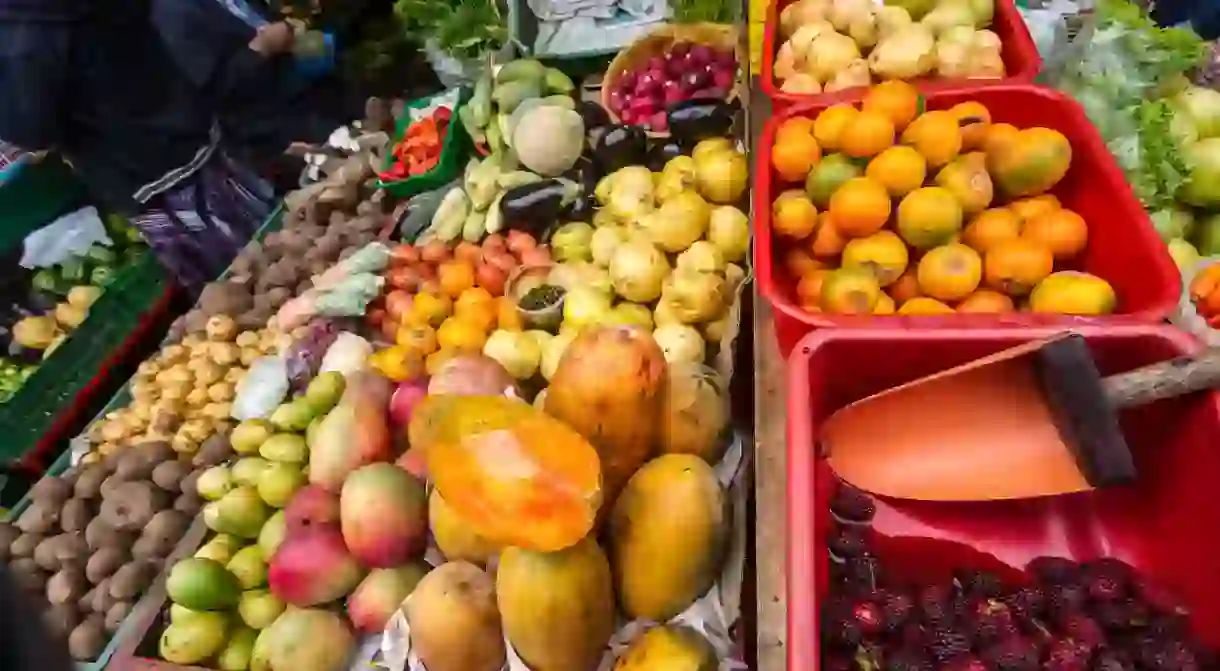A Guide to Colombia's Juices You Have Never Heard Of

One of the many wonderful things about Colombia is its fruits and juices. The country’s year round constant climate, and variation of temperature in conjunction with altitude, provides the perfect conditions for growing crops; wide varieties of fruits can be grown all year round without seasonality. This climate also allows fruits to be grown that may not be found anywhere else.
Lulo
Lulo is a small orange coloured fruit with a tangy and very citrusy taste. You can eat the outside shell but the seeds and juice inside are the most delicious. Lulo is native to the northeastern region of South America and can also be found in Ecuador and Panama but under the name Naranjilla. This fruit has a very distinctive and exotic flavour and is often made into a green coloured juice rather than eaten whole. Grown on trees, it is often referred to as a small orange due to its shape and colour (it also contains high amounts of vitamins A and C).

Guanábana
Guanábana, often referred to as soursop in English, is a relatively large fruit that grows between 20 and 30cm long and can weigh up to 6.8kg. The green hard outside of this fruit contrasts to its soft, slimy, creamy textured pulp. Guanábana is high in vitamins B and C and in Colombia the pulp is often made into ice cream, or combined with milk and turned into a delicious creamy juice.

Tomate de Árbol
Tomate de Árbol, otherwise known as Tamarillo, is a small egg-shaped red fruit, native to the Andes regions. This fruit can grow between 4 and 10cm long, and its colour varies between yellow, orange, red and purple, depending on ripeness. As well as being made into juice it is also commonly made into jam and is a good source of vitamin C.
Uchuva
This high altitude, small yellow fruit is often referred to as a golden berry. It can range between 1 and 2 cm in diameter and contains small seeds. It has a tomato-like texture and is used in Colombia for making juices and sauces, filling pies and in salad dressings. Its sweet taste compliments other strong flavours and it is also a good source of vitamins B and C.

Feijoa
A Feijoa is a small egg-shaped green fruit with a tough, gritty flesh. This fruit has a juicy sweet pulp that’s ideal for making into juices, but is also delicious straight from the tree. It’s often compared to the taste of pineapple, mint and strawberry mixed together. This high altitude fruit is native to the high regions of Colombia, Brazil, Paraguay, Argentina and Uruguay, and is a good source of vitamin C.
Corozo
Corozo is a small, reddish-purple fruit grown high on the palms on the coast of Colombia. This small, berry-type fruit has a very sweet flavour and is frequently boiled with water to make juices, jelly, jam or ice cream. The burgundy coloured juice is typically found of the coasts of Colombia. These berries are often dried and made into jewellery by indigenous Colombian communities.
Arazà
Arazà is a fruit native to the Amazon rainforest regions of Brazil, Peru and Colombia. This orange-sized yellow fruit contains double the amount of vitamin C of an orange and it is only found in the Amazon regions. This acidic fruit has a refreshing and exotic taste, and combined with sugar, water or milk makes a delicious juice drink (it is also frequently made into jam or ice cream).

Borojó
Borojó is a large globule-like fruit which can grow up to 12cm in length. This brown or sometimes green fruit, is native to the northwest of Colombia in the Chocó region and also Ecuador. Each Borojó can contain between 90 and 640 individual seeds and the pulp can be used to make jam, desserts, health supplements and a delicious brown coloured juice.
Granadilla
This small orange, or sometimes yellow fruit is native to the Andes region and grows at a high altitude. Granadillas have a hard, crisp shell, which when cracked open reveals a soft padded layer which protects the black seeds and transparent pulp inside. This fruit can be eaten on its own or in a refreshing sweet juice.













